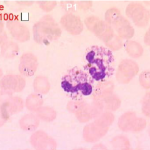Mental health articles
OF mental health care and mentally ill
Diagnosis and Phenomenology of Obsessive-Compulsive Disorder
Diagnosis and Phenomenology
Diagnosis of the Disorder Obsessive-compulsive disorder (OCD) is one of the most severe and chronic of the anxiety disorders delineated in the current psychiatric nomenclature. It is characterized by the presence of obsessions or compulsions, although the majority of patients report both types of symptoms.
An obsession is any recurrent, intrusive thought, image, or urge that is unwanted but cannot be controlled. Obsessions differ from the excessive preoccupation with real-life worries that characterizes generalized anxiety disorder (GAD) in content, form, resistance, and precipitating stimuli. Patients with the two disorders are also easily distinguishable based on core clinical features. The most common types of obsessions involve themes of contamination, dirt or illness (e.g., fearing that one will contract or transmit a specific disease, such as cancer or HIV, or a more general, vague fear of not being clean enough), and pathological doubting (e.g., that some action has not been performed adequately and will consequently result in harm to elf and/or others) . Other common themes include the need for symmetry or orderliness, somatic concerns, and aggressive, sexual, or religious ideation. Generally, patients try to suppress or ignore the thoughts, and diagnostic criteria require that patients realize that the obsessions are products of their own minds . A compulsion is any purposeful, repetitive behavior or mental activity that is performed in a ritualistic or stereotypical way, generally with the goal of reducing anxiety associated with obsessive ideation. As such, compulsions can be conceptualized as escape or avoidance mechanisms, although it should be noted that not all conceptualizations of the disorder include a central role for anxiety. The most frequently reported compulsive behaviors include repetitive washing (e.g., handwashing, showering, house cleaning) and checking (e.g., of locks, appliances, numerical figures, or mathematical calculations. These classes of behaviors generally are associated, respectively, with obsessive thoughts of contamination and excessive doubting. Other common types of compulsions include repeating rituals (e.g., getting up and down from a chair repeatedly, going in and out of doorways), ordering/arranging behaviors, and hoarding. Cognitive compulsions (e.g., mental counting or repetition of certain words, phrases, or images) also occur frequently and generally serve the same function as behavioral rituals. However, mental rituals often go unnoticed by inexperienced clinicians. To differentiate obsessions from cognitive compulsions, it is essential to determine the function of the mental activity. If the function is to reduce discomfort about an obsessive thought, characterization of the cognition as a compulsion should be considered. To diagnose OCD, patients must acknowledge at some point that the symptoms are/were excessive and unreasonable. However, diagnostic criteria call for specification of poor insight when the patient fails to recognize the irrationality of the thoughts or behaviors at the time of diagnosis. Patients in this subgroup also are often classified as exhibiting overvalued ideation (OVI). Although early clinical data indicated that OVI was associated with poor response to behavioral treatment, more recent studies addressing this issue have not been consistent. This literature is difficult to interpret, however, given that patients with OCD exhibit a wide range of insight and fixity of beliefs that make categorization into OVI and non-OVI subgroups challenging at best. Moreover, until recently, no psychometrically sound measure of OVI was available. Due to the lack of wellstandardized assessment tools, it has been difficult to interpret and integrate findings across studies. However, preliminary data on a new measure created by Eisen and colleagues show promise in this regard The Brown Assessment of Beliefs Scale is a seven-item clinician-rated scale that assesses degree of delusionality in OCD and other psychiatric disorders. Initial psychometric data suggested strong interrater agreement, internal consistency, convergent and divergent validity, and sensitivity to change. As such, this measure should provide a solid tool for further investigation into the role of overvalued ideation in OCD.
As with other psychiatric disorders, to diagnose OCD, the symptoms need to create significant distress and/or interfere with functioning. Numerous studies have documented that patients with OCD experience significant disruption in social and family relationships, impaired work performance, and decreased quality of life. Economic costs of the disorder are also high due to inappropriate treatments, unemployment, absenteeism from work, and increased use of welfare or family support. In these instances, OCD should be considered a severe psychiatric disorder that has pervasive and serious impact on the individual and society.
Post Footer automatically generated by wp-posturl plugin for wordpress.
More from my site
Tags: diagnosis, obsessive compulsive disorder, phenomenology







Leave a Reply